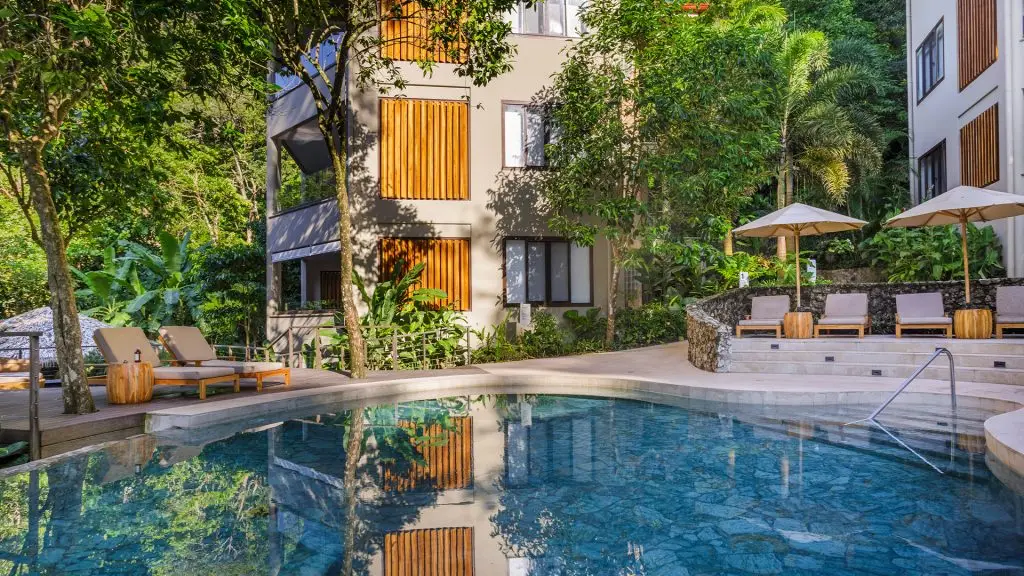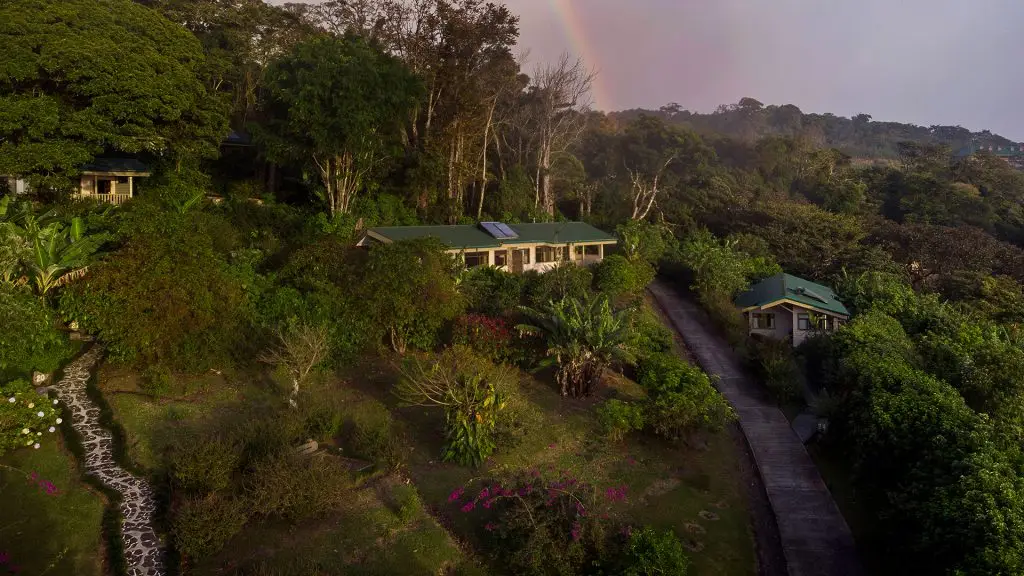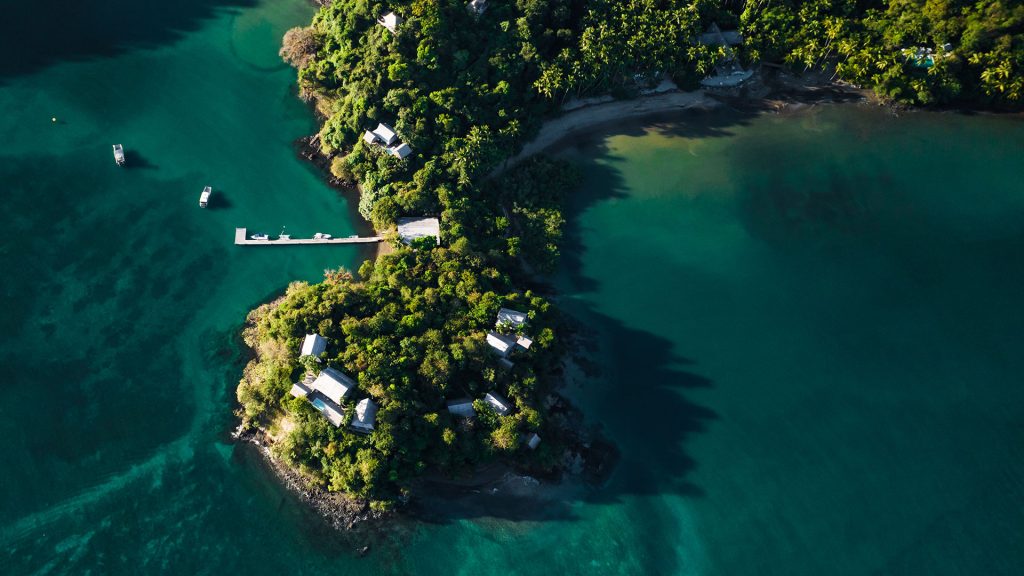Our Changemakers series tells the stories of the people proactively responding to challenges faced by Costa Rica’s natural world and communities. Our aim with these articles is to spread the word, share knowledge, and inspire action.
The Bosque Vivo Foundation is the first, and to date, the only high-altitude reforestation project in Costa Rica. This independent initiative began at a family-run dairy farm with sustainable practices, located on the hillsides of Barva Volcano in the country´s northern region.
The foundation is split into four project areas:
- Volunteering: Opportunities that allow others to donate their time and effort to planting trees. Teamwork is a key principle in Bosque Vivo´s approach to achieving change.
- Education: The forest becomes an immersive classroom with Aula Bosque, providing children with a sensorial learning experience that seeks to instill empathy and concern for the preservation of the forests.
- Greenhouse: The Bosque Vivo Greenhouse is dedicated to collecting seeds, germinating them, transplanting the seedlings into planting bags, and taking care of the young trees until they´re ready to go to reforestation zones.
- Research & Development: In response to the lack of practical knowledge about high-altitude greenhouses, it´s necessary to investigate the best practices for success in germination, seedling development, and the transplanting of trees for reforestation.
Just over a year after the foundation´s inauguration, Journey Costa Rica sat down with co-founders, father and daughter Pier and Giuliana Protti, to get the inside track on what it´s like to innovate and develop such a project.
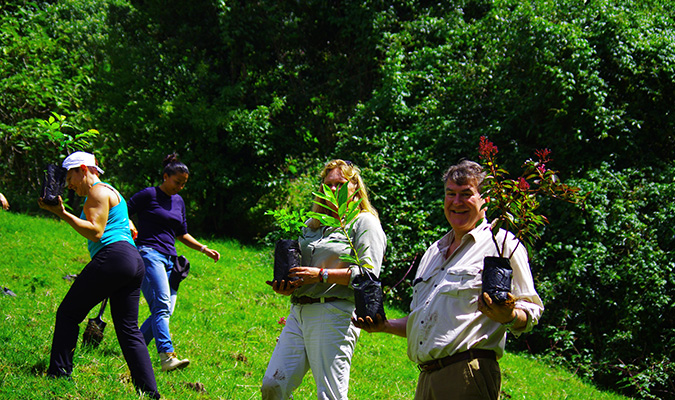
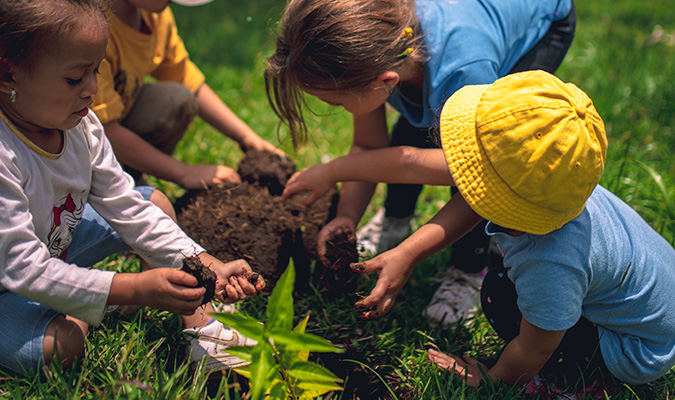
The below excerpts were taken from an interview conducted by Journey Costa Rica with Pier and Giugliana Protti and translated from Spanish. Some editions have been made for brevity and clarity.
HOW THE FOUNDATION WAS BORN
Pier Protti (PP): We have a small, grass-fed, organic dairy farm and we were worried about the environment, so we decided to start planting trees. At that time, around 20% of the farm was natural forest, but we wanted to convert more. Giugliana had the idea of creating a small tree nursery in the forest, so we made some terraces there and planted seeds. Now that we had our first nursery, we started to plant a whole farm, and from there the idea started to emerge – if we´re thinking about how to rehabilitate native tree species, there must be other people too.
So, we continued. We went from having 1,000 trees to 6,000 trees, people started to appear that were also interested and had the land but were lacking the resources to be able to plant trees. It became necessary to find a way to sponsor and make sure these projects could happen. The foundation started here as an instrument to get those resources.
As the project was advancing, we realized that there were no other nurseries doing what we were doing. To date, we´re the first and only nursery that offers tree species for altitudes over 1,700m.
“What’s the importance of high-altitude forests? Without them there’d be no water in the low-altitude forests and their rivers.”
THE IMPORTANCE OF HIGH-ALTITUDE FORESTS
PP: On a global level, the majority of efforts focus on planting trees in lower areas. Costa Rica has a lot of these projects, but where does water come from? The high-up areas! Clouds come along and hit the mountains, all that humidity needs to be captured. If there are no trees on the mountain, the humidity keeps moving past. When a mountain is full of trees, each tree acts as a receptor and condenses the humidity into water, then it trickles down the trunks and foliage to reach the ground, where it penetrates and starts to enrich the aquifers, the underground rivers where we get water from.
So, what´s the importance of high-altitude forests? Without them there´d be no water in the low-altitude forests and their rivers. They´re also an important habitat for animals and in combatting climate change as forests absorb CO2.
PROJECT LONGEVITY
PP: How can we make sure this is not a reforestation project that´s over tomorrow? The only way is to make the future generations fall in love with it [the forest]. And who are the future generations? They´re children that live in concrete cities. You can´t fall in love with something if you don´t experience it. So here´s where the education side comes in: Aula Bosque creates a space where children can go to live a sensorial experience of the forest. They can feel it, smell it, see it, hear it, use all the senses…discovering shapes, designs, variety, everything that a forest entails. We want to generate a wow in these kids!
BOSQUE AULA – EDUCATION PROGRAM
PP: We´re working with an education team to research and generate simple material for little kids and more advanced ones for older children. We´re also working with a publisher called Sipidipi that makes pop-up publications. We want to create books for children to take home that will remind them about their experience in the forest – how it looks before arriving, seeming impenetrable, the sense of a forest full of vegetation and “how do I get in there”! Then, as you get closer you start to see spaces where you can get in, walk the trails, start to discover different shapes, all the types of trees and vegetation that there is, the biodiversity, leaves, trees, vegetation, wow! Every one of these also differs in its textures and aromas, the kids start to explore sensations, there are rough trees, smooth trees, spiky and silky leaves, you start to see the details of natural wealth, bugs on the ground and leaves, insects destroying the vegetation to turn it into nutrients for the same forest, the smell of the earth. What´s a forest? It´s a whole universe! That´s what we want the children to take away as a souvenir.
Aula Bosque is a methodology of experiential learning where the forest becomes the classroom. The idea is that afterwards, the kids can go to a physical classroom and create artwork about what most impressed them about their forest visit…we then want to put the pieces up for sale and with the profits, plant more trees! The children will feel like they´re participating in the project and contributing.
We want to take children for the first time this year [2023] and invite schools – it depends how quickly we can get the funds together to make the book and to build classroom facilities.
“Aula Bosque creates a space where children can go to live a sensorial experience of the forest.”
VISITOR EXPERIENCES FOR TRAVELERS
PP: For tourist experiences, we have 3 possibilities.
To live the whole experience from planting a seed, taking a tree and planting it in the forest, and getting to know the forest. Also, to understand the challenges – for example high altitude trees blossom whenever they feel like it! It could be one year on then not again for five to six years. You have to collect seeds when they´re available because you don´t know if there´ll be any next year!
Another is the farm experience – not just explanations but feeding a calf milk, combing, milking, and herding cows, understanding the dynamic of a farm with a focus on climate change.
The third experience would be the two above combined, to learn about the importance of forests and how to run a carbon neutral farm…a very educational visit to see it all in action!
FUTURE GOALS
PP: [We’re looking to create infrastructure] that will open the possibility for university students to carry out their thesis investigations on high altitude forests.
GP: [In the next years] hopefully we’ll already be working with the DEP (Costa Rica´s Private Education Directorate) to have an education system implemented in all schools across the country, so that the majority of children can have the experience of going to the farm or an affiliated farm to have contact with the forests. Regarding the rehabilitation side, I´d like to have rehabilitation in the whole country – not only at high altitudes but also low altitudes, like projects rehabilitating mangroves. Hopefully in other countries too…
PP: To be able to emulate our experience in other countries…
GP: Central American countries like Panama and Nicaragua have ecosystems similar to Costa Rica and they´d be able to replicate things where we already have the know-how.
Read More from the Interview
Giuliana Protti (GP): We´ve got one type of sloth, spider monkeys, coyotes, pumas, ocelots, so many! Emerald toucanets, quetzals, owls, hawks, infinite types of birds…
PP: The amount of fauna in high-altitude forests is incredible but the density isn´t the same as in low-lying areas, so it´s a bit more complicated to see some species. Did you see Bosque Vivo´s Instagram video of Giugliana with the tapir? That´s a one in a million experience! To find an adult tapir on your farm, a real wild animal, that lets you get close enough for it to smell your hand…wow! I´d love everyone in the world to have those kinds of experiences.
PP: At the moment we have two areas but still not enough [germinated] trees – it´s a work in progress! One zone, Calle Amapola, is over in Carrizal on the hillsides of Barva Volcano adjoining with Poás Volcano. Those trees are in an area where the easterly winds blow through because they´re in a mountain pass between two volcanoes, it´s a microsystem and a little bit different regarding climate, ours [nursery at the farm] is more protected from the easterly winds. As the young trees will get used to the climate and the area, when they´re transplanted [within the same region], logically, they´ll suffer less stress because they´ve already adapted to that climate. If we took them from the nursery and planted them straight away they´d suffer a double stress – the first is the environment, and the second is being planted. At Calle Amapola, the family has about 7 hectares for rehabilitation, so we have enough space to work for a good while and we want to grow that nursery so at some point we can run volunteer initiatives to go and plant as much as possible.
The other mobile zone will be higher up near Irazú Volcano at about 3000 meters, the land has already been offered and we´re working on getting enough trees ready. It´s practically on the boundary between high altitude forests and alpine tundra; we´ll be able to plant oak trees!
So, at the moment there´s the main nursery that´s a germination center where we have young trees for small/medium projects, then we have the mobile nursery at Calle Amapola where we´re taking the trees to develop, and when they´re about 30-40cm high and we have enough, we´ll take them to plant in a reforestation area, their final home. This is the part with shrubs, some fast-growth trees, and then slower-growth trees, trying to emulate what happens in nature.
GP: When we started, we were working with a few people who were experts in trees from the area, who learned everything empirically and were helping us to germinate seeds, then, we were talking to some universities and with that we could get going. We´ve found that many people start out enthusiastic but don´t commit, that´s been a challenge…we´ve had to teach ourselves a lot.
PP: We´ve learned to distinguish different types of trees and how to plant them. You can´t be immersed in an activity without having experienced it yourself, we´ve learned to understand what´s happening. [For example] these trees aren´t growing properly because they´re lacking in nutrients, the soil isn´t soft enough for the roots to develop, this tree is tall enough to be transplanted as its roots have reached the bottom of the planting bag and if not, they´ll start to bend.
GP: It´s me and my dad, my mum also helps as she knows a lot about gardening and plants – she helps in the nursery when she can…
PP: She´s an educator and works with little kids…
GP: We have an independent education team, a sustainability partner who used to be a tour guide – she´s coming up with some birdwatching tours. In the nursery day-to-day it´s just me and my dad.
PP: Also, the pop-up book designers and we have another alliance with ´Guardianes de la Naturaleza´ (Guardians of Nature), a foundation from Nosara, a beach zone, that already has education programs for children and teachers. We´ve just signed an agreement with them to share experiences and so we can emulate the programs in education and social thought that they´ve been managing for 10 years and bring them to our communities. We believe that one cannot work alone, that strategic alliances are fundamental.
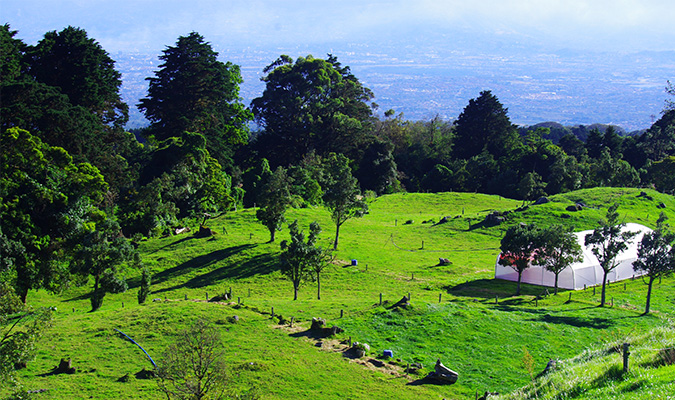
A big thank you to Giugliana and Pier for taking the time to chat with us! We love how Bosque Vivo helps us to get to know the wonders of the forests and make a connection with them, planting the seeds of awareness and action in every visitor. We´re proud to support such a meaningful sustainability project and contribute to the Journey Forest, where our team planted 150 trees to reforest a vanished wetland. Click here to find out more about Journey Costa Rica´s partnership with Bosque Vivo.
Interested in Responsible Travel?
At Journey Costa Rica, we charge each of our travelers a 100 USD conservation fee that goes directly to Bosque Vivo to support their invaluable work. Let our travel planners know if you´d like to arrange a visit to Bosque Vivo HQ and get to know the team´s efforts firsthand, as well as checking out our inspirational Help the Planet itinerary to see what an environmentally conscious trip in Costa Rica can look like.
